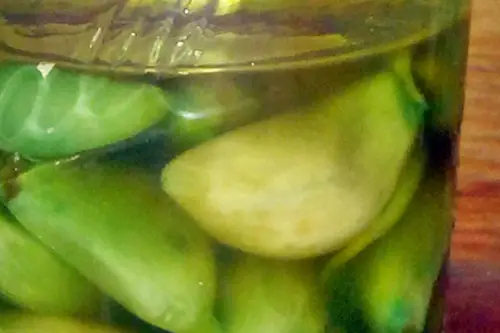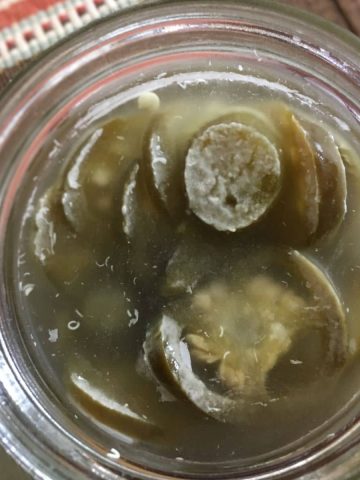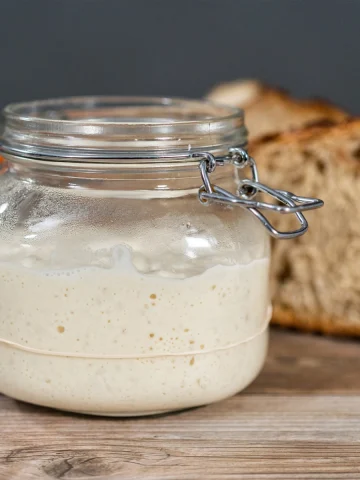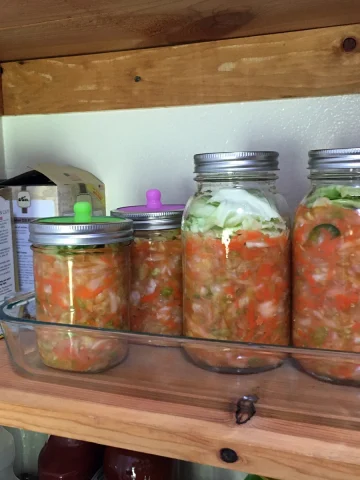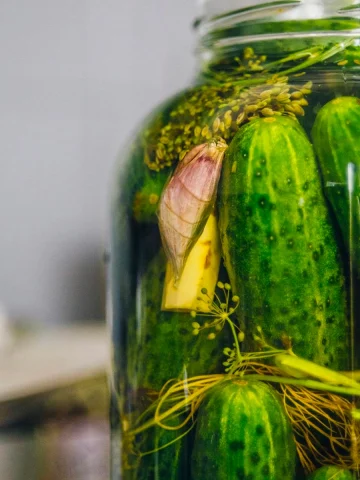Why Does Garlic Turn Blue?
It is quite a surprise when a batch of fermented garlic turns blue. However, the good news is that it’s perfectly fine to eat and not an indicator of a bad ferment. I first saw this happen in a batch of fermented honey garlic.
I set up the batch to ferment just as I always have, nothing out of the ordinary. When examining the finished product, however, I was surprised to see the cloves of garlic ranging from an aqua-blue to a bright blue.
Garlic is naturally a soft white but can turn blue or green when exposed to an acidic environment.
Lemon juice and vinegar are two common ingredients that will turn garlic blue if the garlic is exposed to it for a long time.
The acidity causes the reorganization of the molecules in the garlic cloves, creating polypyrroles, molecules that alter garlic color to blue or green.
Why Does Garlic Turn Blue During Fermentation?
Even if your recipe contains no acidic ingredients, your garlic cloves will likely turn blue over time.
When fermenting garlic, the lactic acid created by the bacteria is what turns the garlic blue.
Garlic turning blue does not happen every time you ferment with garlic. But don't be surprised when you make a batch of sauerkraut, kimchi, or honey garlic and see a bit of blue garlic in the jar. It is still safe to eat.
Garlic contains both sulfur and amino acids when they combine, and they can create blue pigments. Furthermore, reactions with copper (or other metals) and acid (such as that produced by the lactobacilli) can help this reaction take place and release the colors.
The fermentation process creates an acidic environment that leads to this color-producing reaction. You might have experienced this when cooking garlic with vinegar or lemon juice in a copper pan.
This process can bruise the garlic, so there isn’t a uniform color change. Instead, the bruised parts undergo a more profound pigmentation release as the acid can penetrate deeper into the garlic.
Consider using the blue pigment to indicate a good ferment, showing that the desired acid environment was achieved. So, in addition to producing the fermentation that I want, this acidic condition is also keeping botulinum from forming. Blue garlic means no botulism!
Is Blue Garlic Safe to Eat?
Still not sure about whether or not blue fermented garlic is safe to eat? You can always try the smell test. Absent any sign of spoilage such as foul smell or mold; you’ve got a green light to eat it.
If it smells strong like garlic, it is normal; if it smells like it turned to compost, then I would say it is bad.
And check out my post on 'how to tell if garlic is bad' to determine if your garlic has gone bad.

